In 2025, home design has undergone a dramatic shift away from the minimalist “less is more” aesthetic that dominated the past decade. Homeowners are embracing the philosophy that “more is more of what brings you joy” as Texas-based designer Katie Davis so perfectly articulates. Maximalism isn’t merely about accumulating objects—it’s about creating spaces that overflow with personality, history, and self-expression. This movement, championed by Gen Z but embraced across generations, celebrates the bold, the eclectic, and the deeply personal. As William Burges, the visionary British architect, declared in the 19th century: “I hold that taste is not gratified by avoiding the expression of beauty or power on account of its costliness. In short, I think it better to have a room rich and full of beautiful things than a room bare and empty of any.” This sentiment perfectly captures the essence of today’s maximalist renaissance.
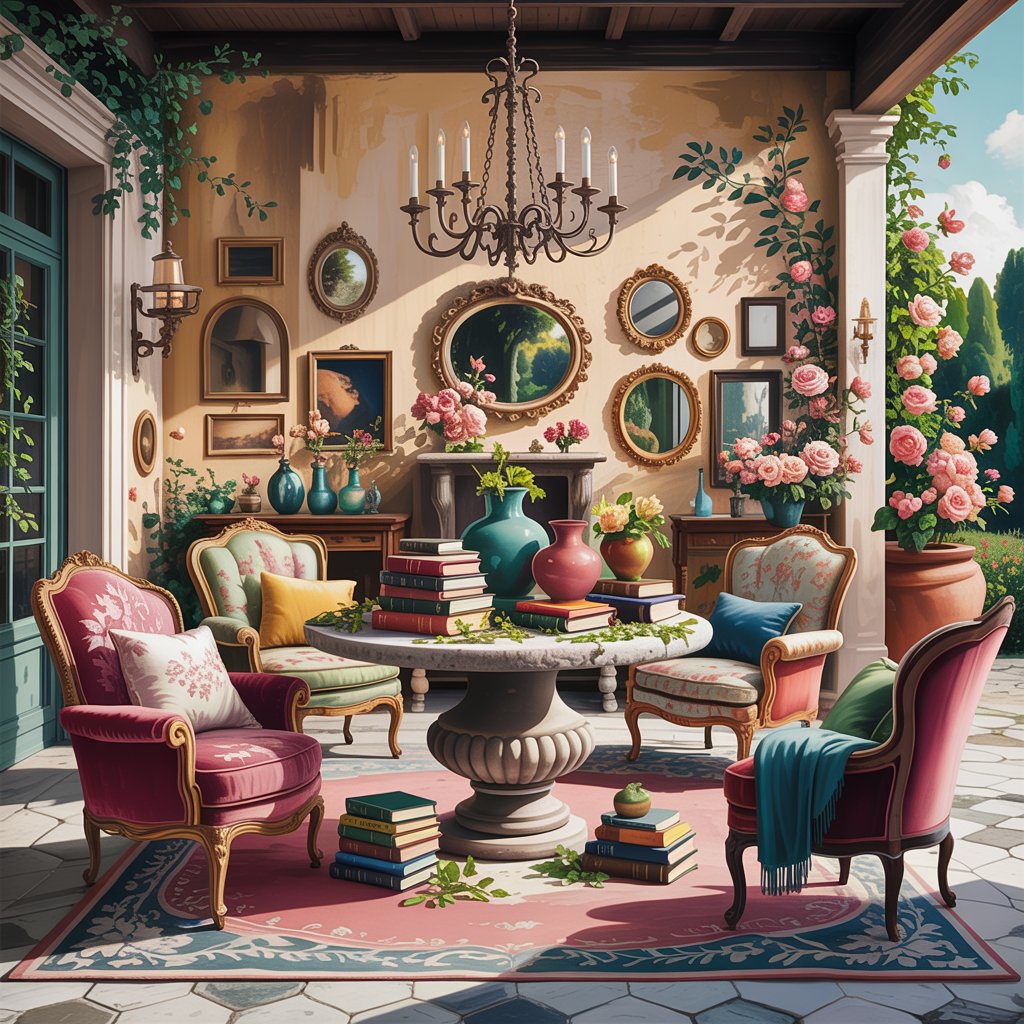
Let’s explore 15 transformative maximalism decor ideas to help you create a home that doesn’t just house your belongings, but tells your unique story through every curated corner and vibrant hue.
What Exactly Is Maximalism in 2025?
Maximalism has evolved beyond simple “more stuff” into a sophisticated design philosophy centered on meaningful abundance. This year’s iteration focuses less on clutter and more on intentional curation—each piece must earn its place by sparking joy or telling part of your narrative. Unlike the stark minimalism that preceded it, maximalism revels in texture, pattern, and historical resonance, creating spaces that feel lived-in and emotionally rich.
Today’s maximalism represents a rebellion against sterile, one-size-fits-all aesthetics. According to Better Homes and Gardens, this movement is particularly resonant with Gen Z, who are transforming homes into personal galleries that defy conventional design rules. The movement isn’t about random accumulation—it’s about creating layered environments where every object contributes to a cohesive, deeply personal visual narrative.
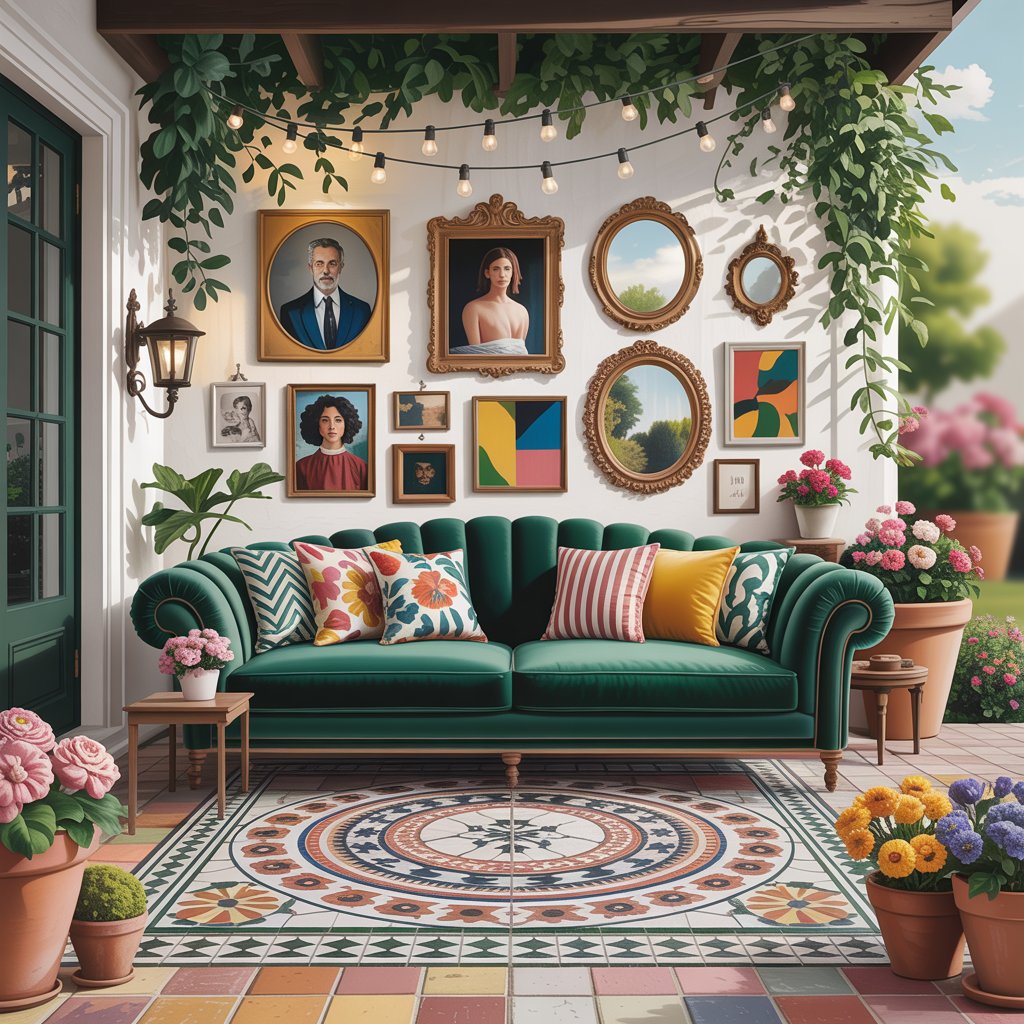
Pro Tip: Before adding anything new, conduct an “emotional inventory” of what you already own. Maximalism should feel authentic, not performative.
Why Maximalism Is Dominating 2025 Design
The resurgence of maximalism speaks to our cultural moment—a collective desire for spaces that feel authentically personal in an increasingly digital and homogenized world. After years of minimalist interiors that often felt cold and impersonal, homeowners are craving environments that overflow with warmth, history, and character. Maximalism reflects our complex identities in a way that blank canvases simply cannot.
Persimmon Design notes that this movement has roots in historical design philosophies but has been revitalized for contemporary sensibilities. Unlike past iterations, 2025’s maximalism emphasizes quality over quantity—it’s not about filling every inch with cheap decor, but about thoughtfully assembling pieces that collectively create visual harmony through intentional discord.
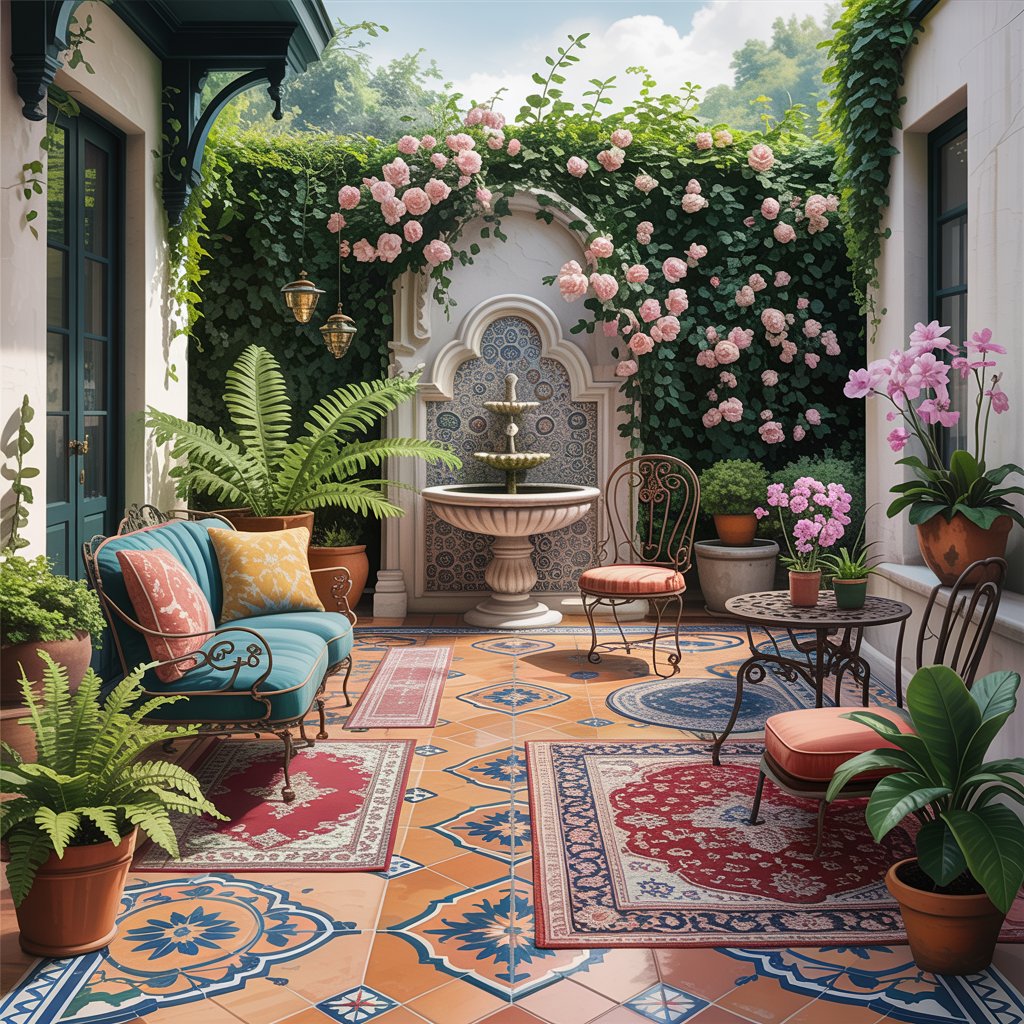
Pro Tip: Embrace contrast—pair sleek modern elements with ornate vintage pieces to create dynamic tension that keeps the eye moving.
Invest in Iconic Statement Furniture
Forget the ubiquitous Eames lounge chair—the Vladimir Kagan Serpentine sofa has emerged as 2025’s must-have centerpiece. These sculptural, flowing designs command attention and serve as the perfect foundation for your maximalist space. Rather than filling your home with numerous small furniture pieces, focus on acquiring fewer, higher-quality statement items that function as art themselves.
As PureWow observes, “The new maximalism doesn’t mean more stuff—it means better stuff. Pieces that feel like art, that command attention, that carry a sense of history.” This approach ensures your space feels curated rather than crowded, with each piece contributing significantly to your overall aesthetic.
| Furniture Piece | Vintage Alternative | Maximalist Benefit |
|---|---|---|
| Vladimir Kagan Serpentine Sofa | 1970s Milo Baughman | Creates fluid visual movement |
| Murano Glass Chandelier | Hand-blown art glass | Adds light refraction and color |
| Bell Coffee Table by Sebastian Herkner | Carved wooden trunk | Serves as sculptural centerpiece |
| Polonaise Cloisonne Rug | Vintage Persian | Defines space with intricate pattern |
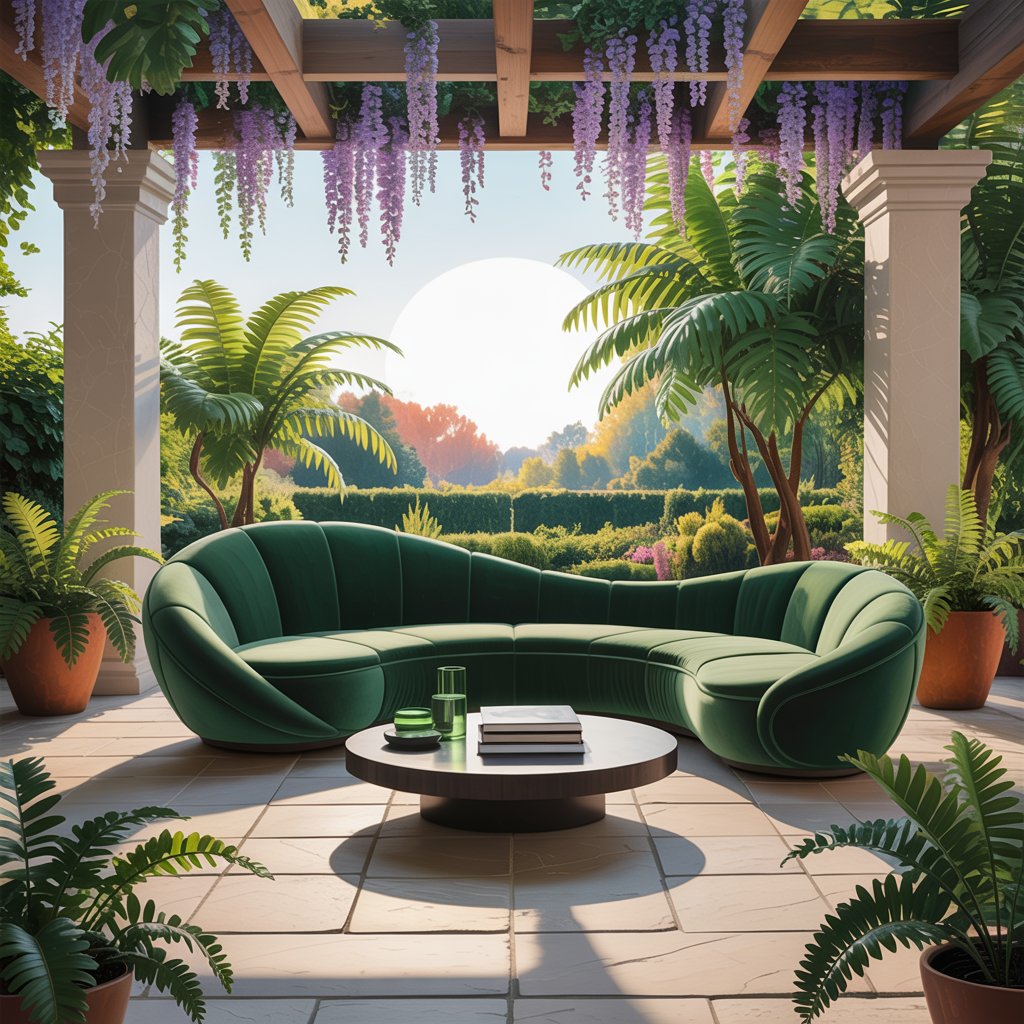
Pro Tip: Position your statement furniture to create conversational groupings that encourage interaction rather than focusing solely on television viewing.
Transform Your Ceiling into a Fifth Wall
One of the most exciting developments in 2025 maximalism is the treatment of ceilings as the “fifth wall”—an opportunity for dramatic expression. As seen in the exquisite work by Lonesome Pictopia, custom-painted ceilings add unexpected depth and wonder to any room.
“I hold that taste is not gratified by avoiding the expression of beauty or power on account of its costliness,” William Burges reminded us long ago, and this principle extends perfectly to ceiling decoration. Whether you opt for hand-painted botanical motifs, celestial patterns, or simply a bold, saturated color, your ceiling can transform an ordinary room into an immersive environment.
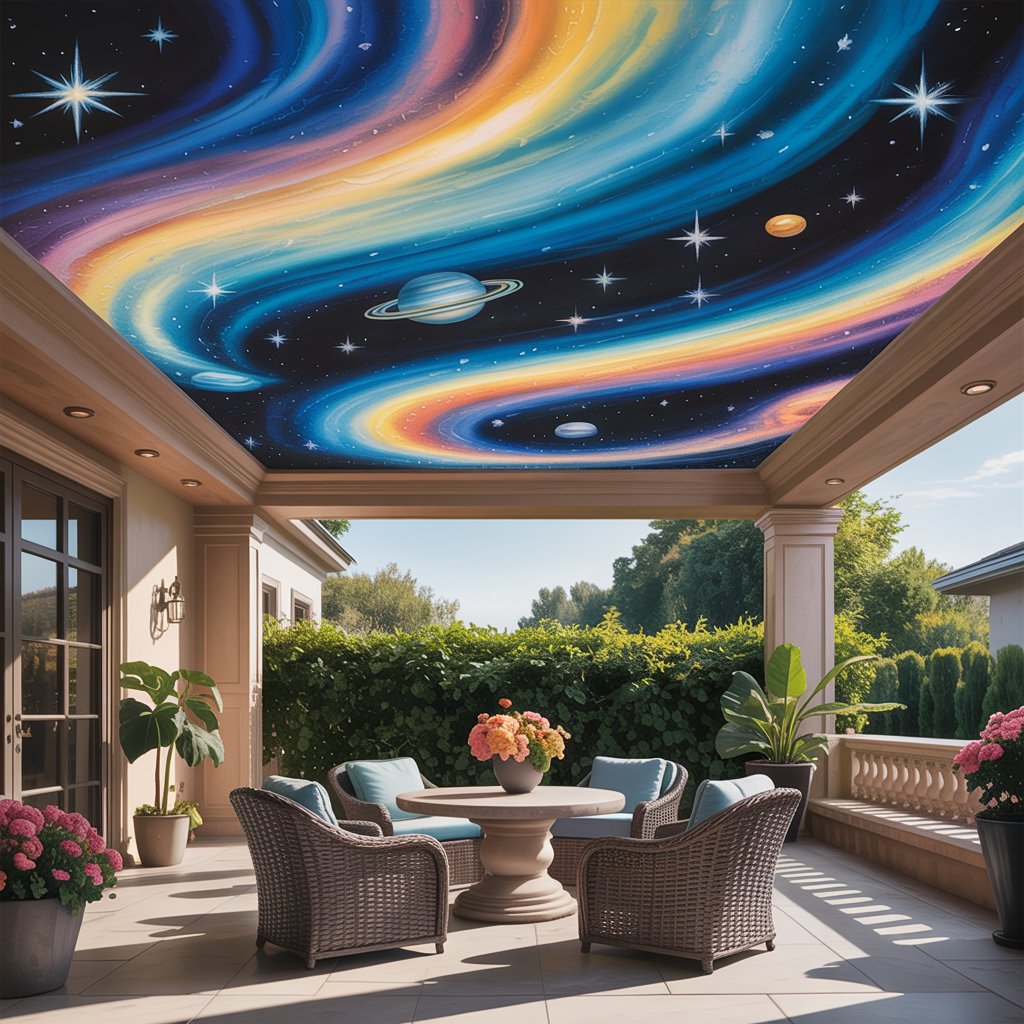
Pro Tip: Use semi-gloss paint for ceiling artwork—it reflects light beautifully and makes maintenance easier.
Master the Art of Pattern Layering
Maximalism thrives on the strategic layering of diverse patterns that, at first glance, might seem incompatible. The key is establishing harmony through color continuity while allowing patterns to contrast in scale and style. Pair large-scale floral wallpapers with smaller geometric textiles, or mix traditional damasks with contemporary abstract prints.
According to interior design experts, successful pattern mixing requires a unifying color thread—perhaps a single shade that appears across multiple patterns. Start with a dominant pattern (60% of visual weight), add a secondary pattern (30%), then introduce an accent pattern (10%) for visual interest without overwhelming the space.
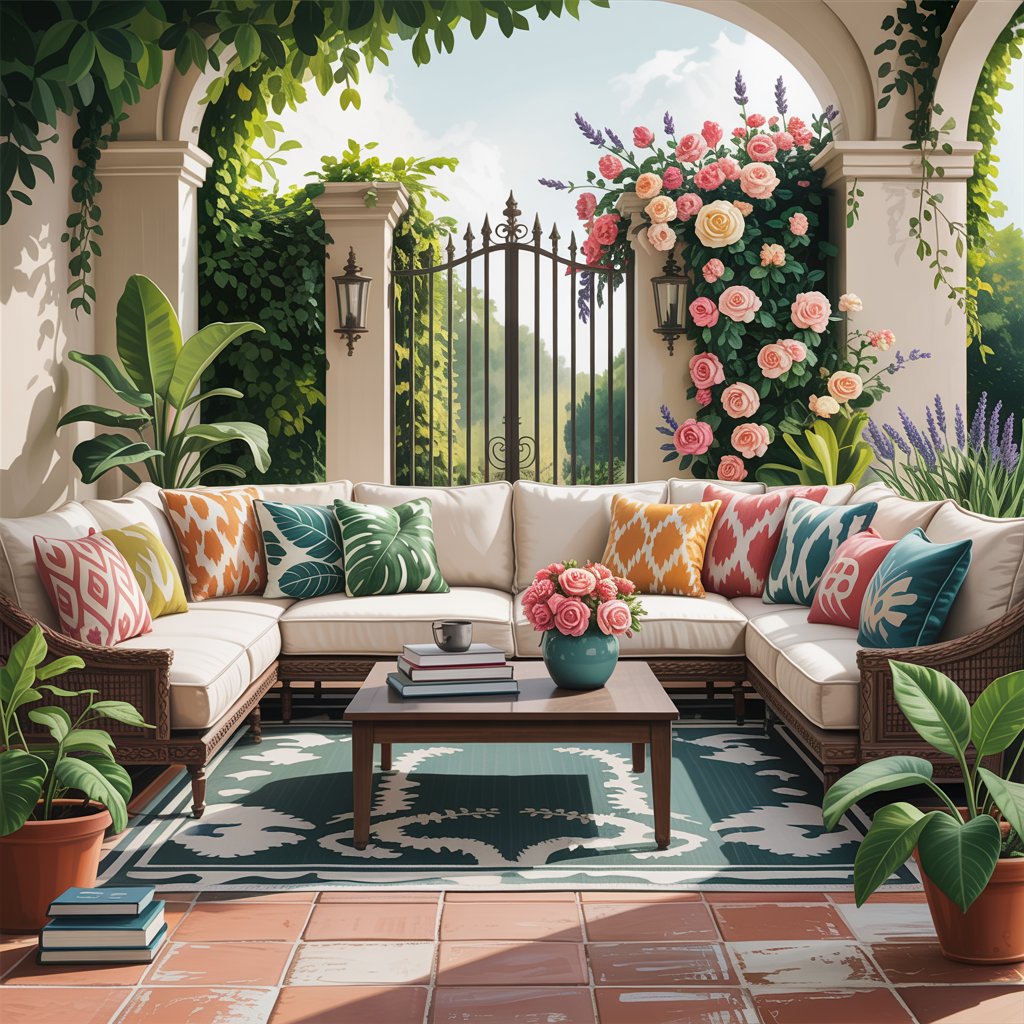
Pro Tip: Always incorporate one solid color element to give the eye a place to rest amid busy patterns.
Create Gallery Walls That Tell Your Story
Move beyond matching frames and symmetrical layouts—2025’s maximalist gallery walls embrace asymmetry, varied frame styles, and unexpected arrangements that tell your personal narrative. Mix fine art with family photographs, vintage maps, textiles, and three-dimensional objects to create a dynamic visual experience.
The most compelling gallery walls follow an organic growth pattern—adding pieces over time as your collection and story evolves. Begin with a central anchor piece, then build outward in irregular formations that follow natural lines of sight rather than rigid grids. This approach creates movement and invites exploration.
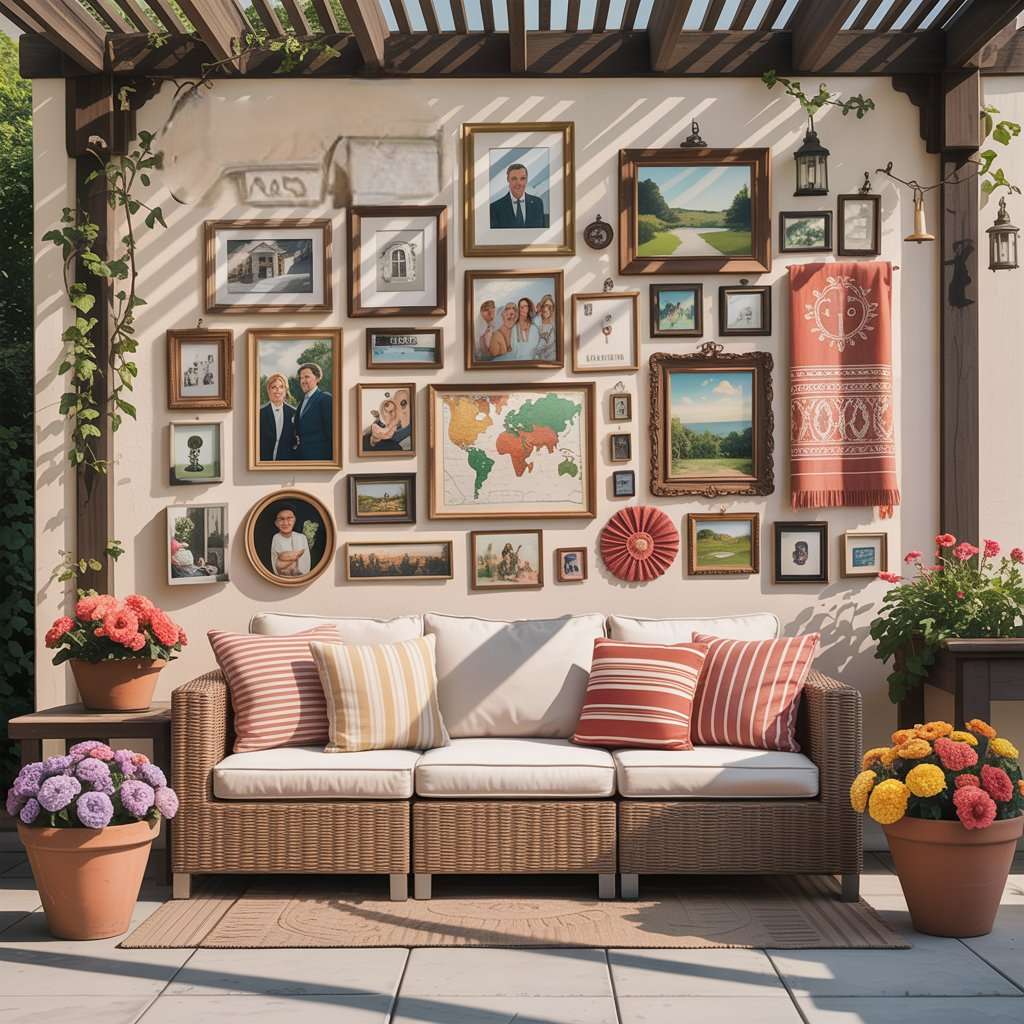
Pro Tip: Lay out your gallery wall arrangement on the floor first, photograph it, then use the photo as a guide when hanging pieces.
Bring Drama with Sculptural Lighting
Lighting has evolved beyond mere function in 2025 maximalist spaces—it’s become theatrical spectacle. No fixture embodies this shift better than the Murano glass chandelier, with its vibrant colors and organic forms that cast enchanting patterns when illuminated. These statement pieces serve as both functional lighting and dramatic art installations.
Consider layering multiple lighting sources at different heights—pendant clusters above dining areas, sculptural floor lamps in seating areas, and strategically placed wall sconces that highlight artwork. The interplay of light and shadow creates depth and dimensionality that flat, even lighting cannot achieve.
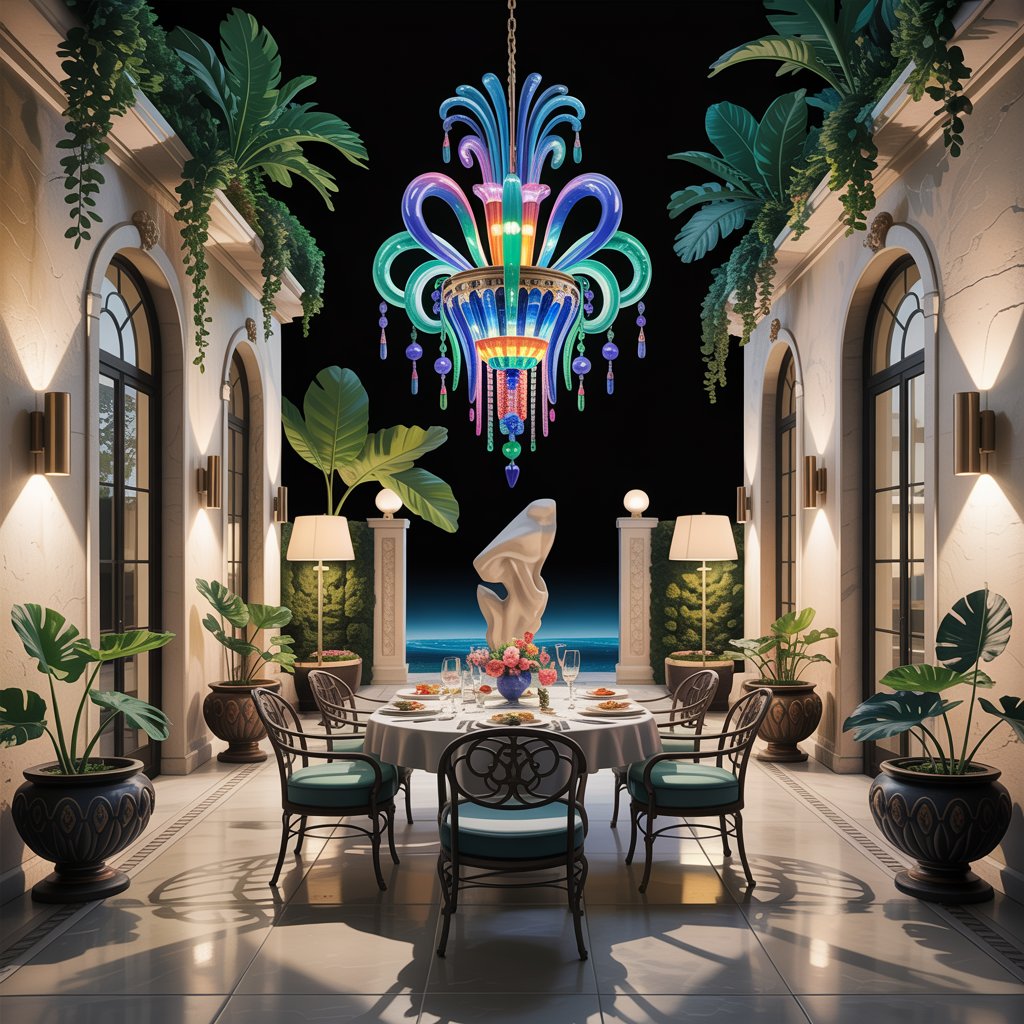
Pro Tip: Install dimmer switches for all lighting circuits to control the mood and highlight different elements of your maximalist design.
Mix Eras with Intention
True maximalist mastery involves seamlessly blending pieces from different design eras without creating visual chaos. Successfully mixing vintage and contemporary elements requires finding common threads—whether material, color, or underlying design principle—that create cohesion across time periods.
Consider placing a sleek modern dining table beneath a traditional Victorian chandelier, or surrounding a 1970s sectional with antique side tables and contemporary art. The juxtaposition creates visual interest while demonstrating design sophistication. As Lindy Design Build demonstrates, even original woodwork can coexist beautifully with bold modern additions when approached with thoughtful intention.
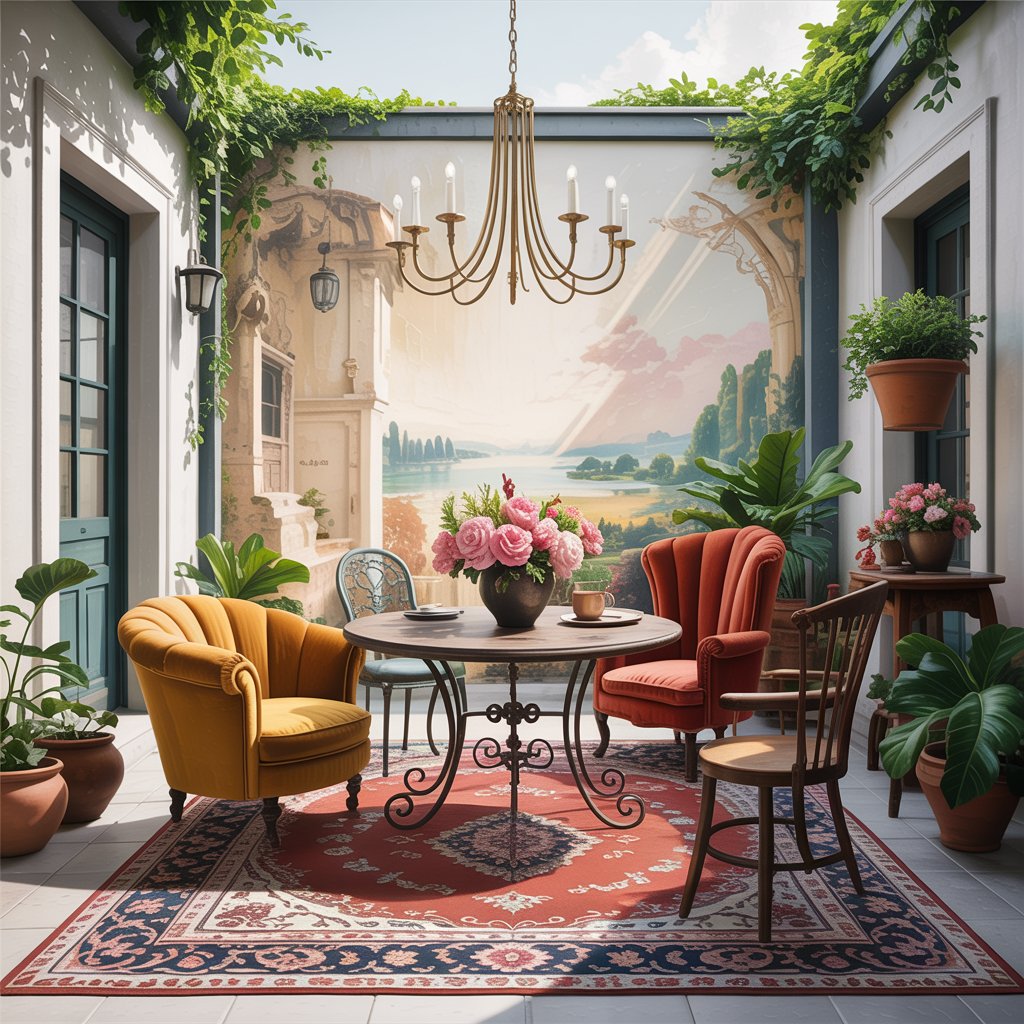
Pro Tip: Establish a consistent finish or material (like brass or walnut) across pieces from different eras to create visual continuity.
Embrace Rich, Saturated Color Palettes
Gone are the days of safe neutrals and monochromatic schemes. 2025 maximalism celebrates bold, saturated color that makes an immediate impact. Deep emerald greens, vibrant cobalt blues, and rich terracotta tones create immersive environments that feel luxurious and enveloping.
Rather than painting entire rooms in single colors, consider dramatic color blocking—painting geometric sections of walls in contrasting hues, or creating bold panels that frame specific areas. The Madison and Grow Eloise Starry Night wallpaper mentioned by Lindy Design exemplifies how wall surfaces can become major artistic statements.
| Color Combination | Psychological Effect | Best Rooms |
|---|---|---|
| Deep Teal + Mustard | Intellectual yet welcoming | Studies, Libraries |
| Burgundy + Gold | Luxurious and warm | Dining Rooms, Master Suites |
| Emerald Green + Cream | Calming yet sophisticated | Living Rooms, Bathrooms |
| Navy + Coral | Energetic with balance | Family Rooms, Kitchens |
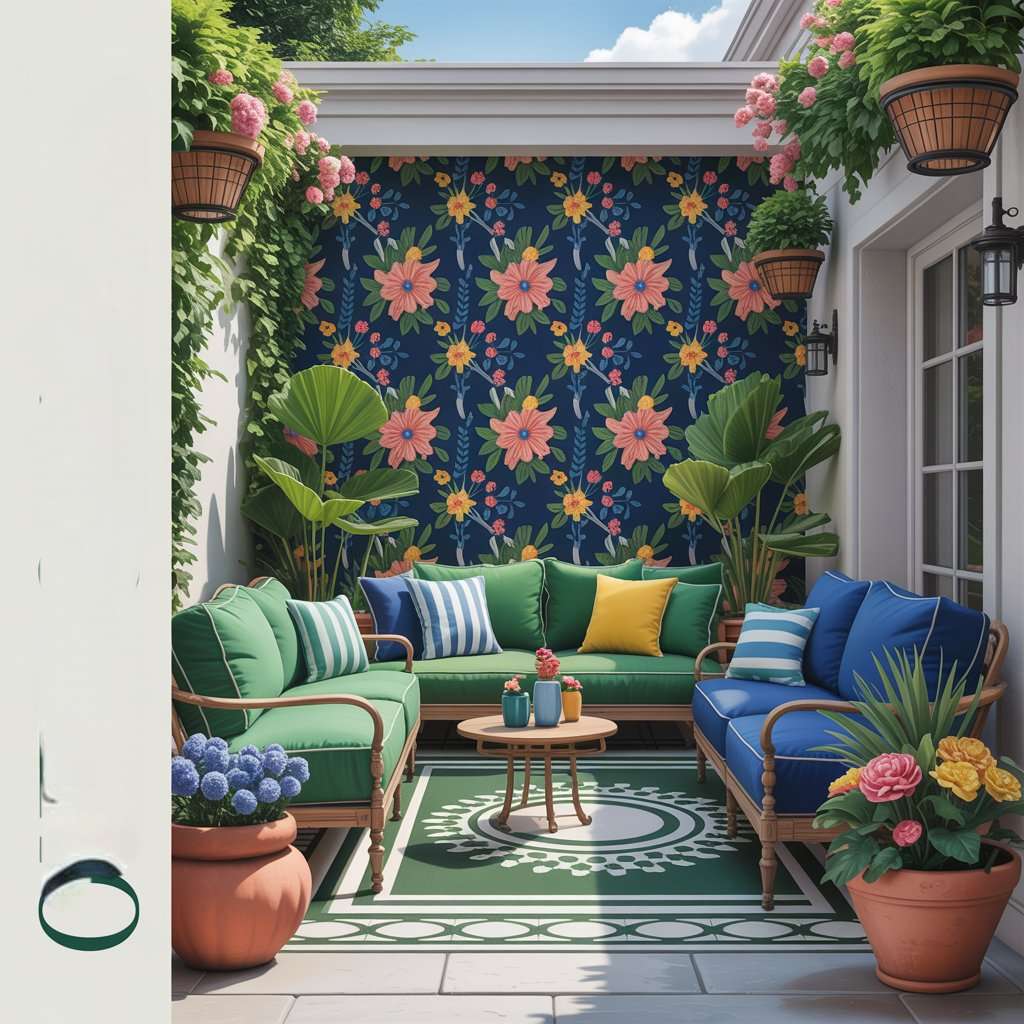
Pro Tip: Test paint colors on large movable boards rather than small swatches to see how they interact with your lighting and existing furnishings.
Layer Textiles for Tactile Depth
Maximalist spaces come alive through tactile layering—the strategic placement of multiple textiles that invite touch and create visual depth. Begin with a foundation of substantial area rugs (like the Tufenkian Polonaise Cloisonne rug), then add throws, pillows in varying textures (velvet, linen, bouclé), and window treatments that complement rather than match.
The most successful maximalist interiors incorporate at least five different textiles in each main living space, creating a rich tapestry of textures that evolve as you move through the room. Don’t be afraid to mix patterns within your textiles—stripes with florals, geometrics with organic motifs—when unified by a consistent color story.
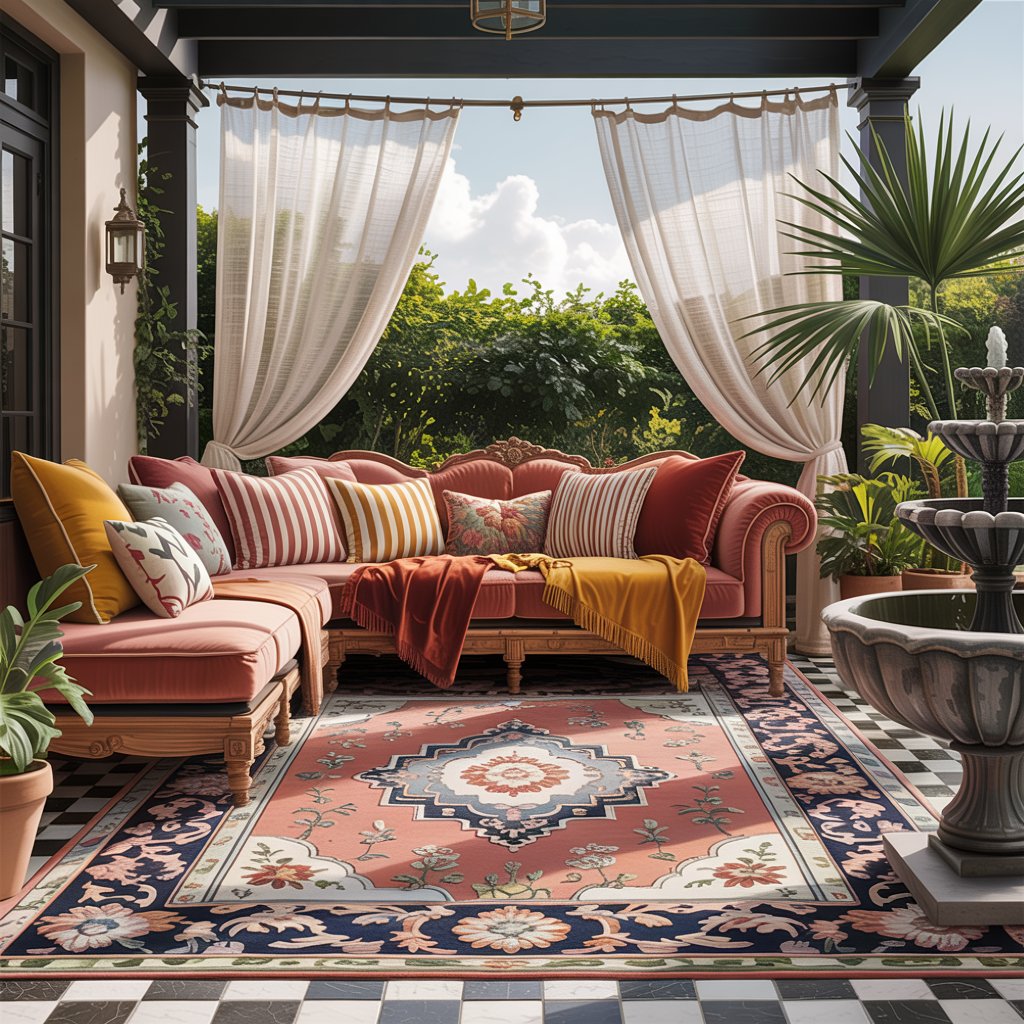
Pro Tip: Select one “hero textile” with a striking pattern or texture, then build complementary layers that support without competing.
Curate Meaningful Collections
Rather than hiding your collections away, maximalism encourages you to celebrate what you love by displaying it prominently. Whether you collect vintage teacups, first edition books, or ceramic birds, arrange your treasures in dedicated vignettes that tell the story of your passions.
Create “collection zones” throughout your home—shelving units specifically for showcasing certain categories, cabinet displays with carefully arranged items, or even dedicated walls that function as “shrine spaces” for particularly meaningful objects. The key is organization within abundance; chaotic clutter undermines the intentional aesthetic maximalism requires.
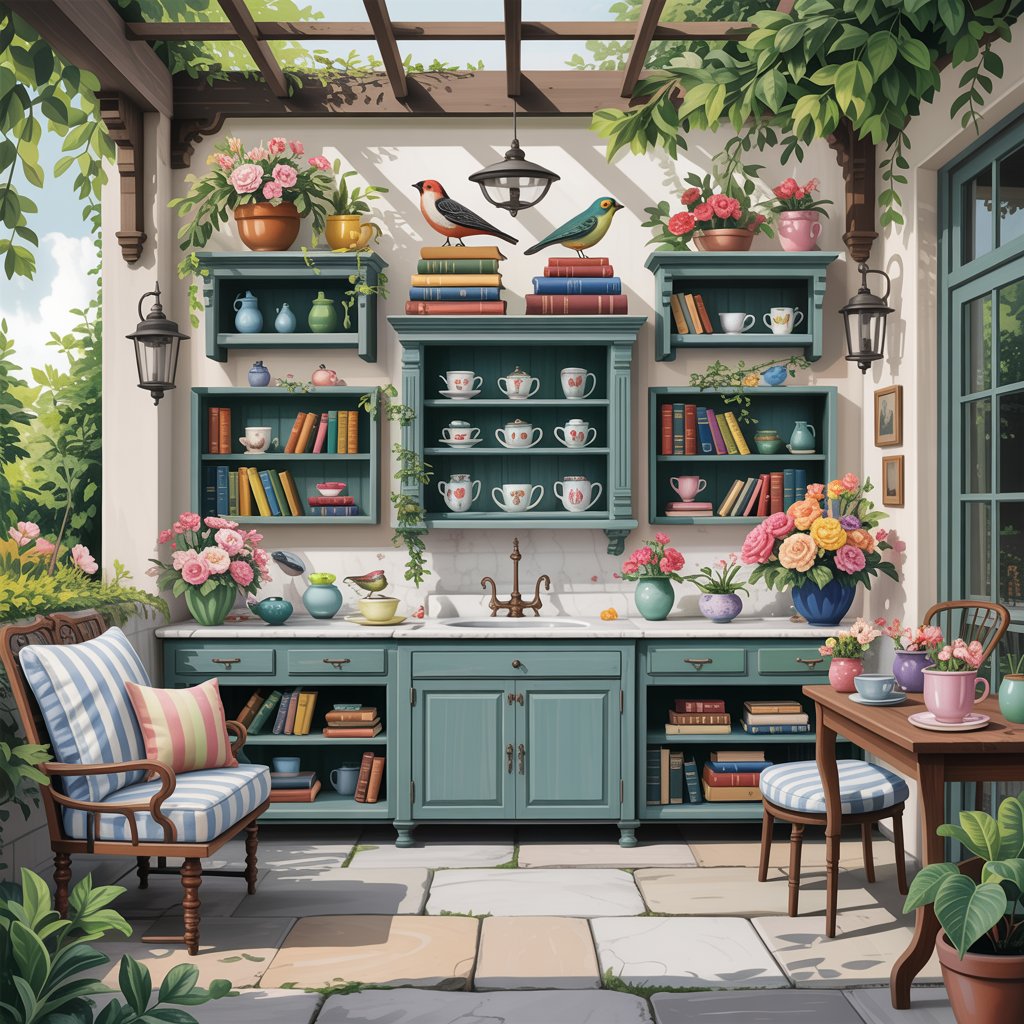
Pro Tip: Group similar items in odd numbers (3, 5, 7) for the most visually pleasing arrangements.
Design Maximalist Kitchen Spaces
Kitchens have emerged as prime candidates for maximalist treatment in 2025. Move beyond subway tiles and minimalist cabinetry—embrace patterned cement tiles, painted cabinetry in rich colors, and open shelving that displays your most beautiful dishware as decoration.
Consider adding a statement island pendant or cluster of lighting that becomes the kitchen’s focal point. Mix hardware finishes for visual interest, and don’t shy away from bold wallpaper in adjacent breakfast nooks or pantry areas. The kitchen should feel abundant and welcoming, reflecting the nourishment it provides.
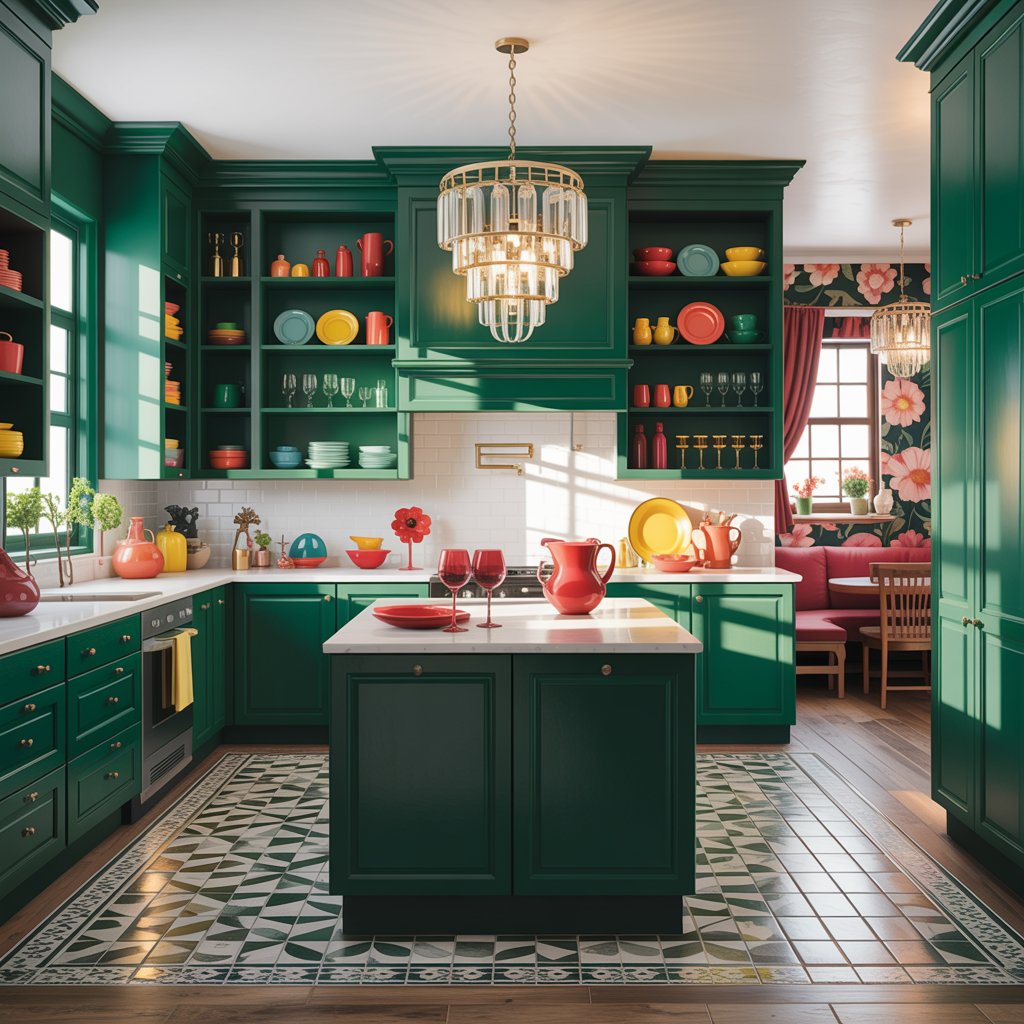
Pro Tip: Display your prettiest glassware on open shelves where light can pass through them, creating jewel-like visual effects.
Create Luxurious Maximalist Bathrooms
Transform your bathroom from a utilitarian space into a personal sanctuary through maximalist principles. Think beyond white tile—consider bold wallpaper in moisture-resistant varieties, richly colored cabinetry, and unexpected metallic finishes on fixtures.
Incorporate multiple layers of texture through woven baskets, plush towels in varying colors, and strategically placed plants. Statement mirrors with ornate frames serve dual purpose as functional items and decorative focal points. Consider a feature wall with dramatic tile work or even a small mural that creates an immersive experience.
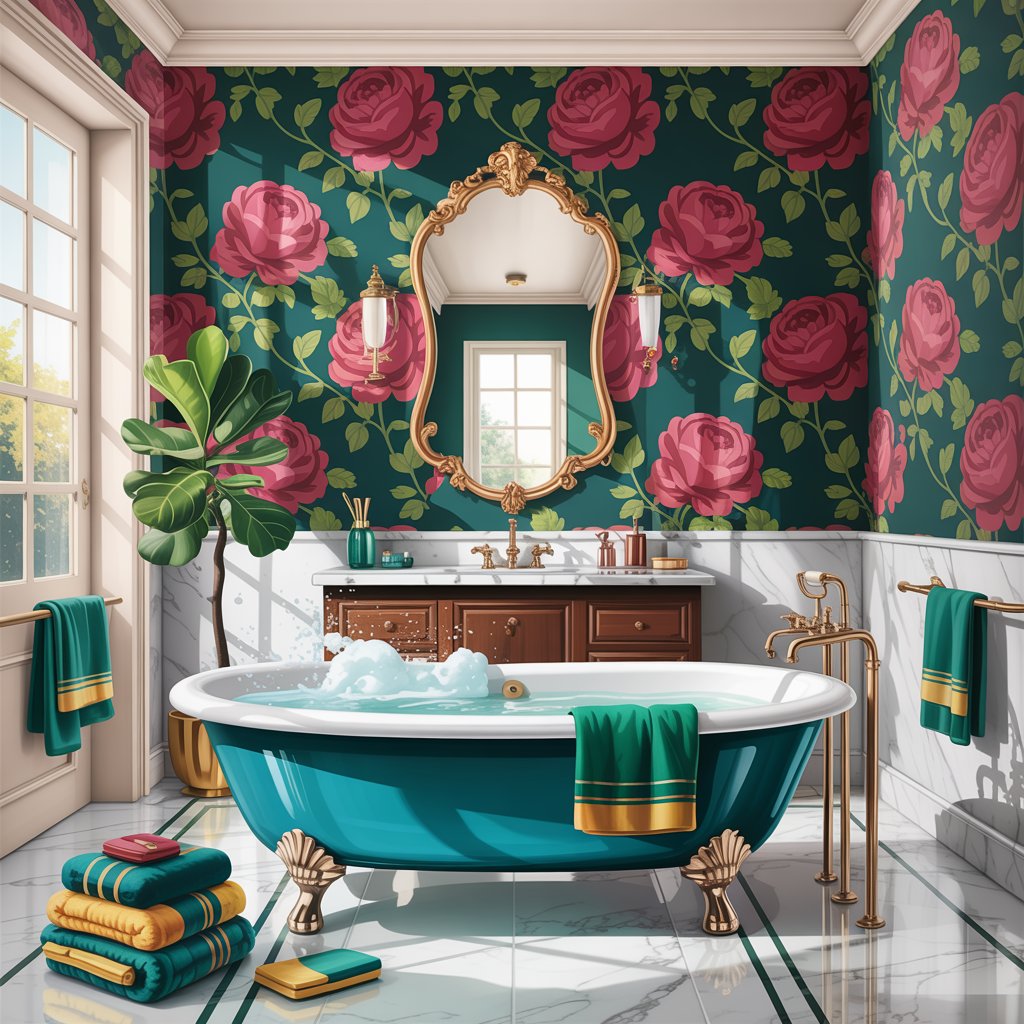
Pro Tip: Use moisture-resistant wallpaper on the ceiling for an unexpected touch of luxury that remains practical.
Design Maximalist Outdoor Living Areas
Maximalism extends beyond interior spaces in 2025, transforming patios, porches, and gardens into outdoor expressions of personality. Layer outdoor rugs, mix seating styles (rather than matching sets), and incorporate abundant greenery with varied textures and colors.
Create “rooms” within your outdoor space using strategically placed planters, screens, or outdoor curtains that segment the area into distinct zones for dining, lounging, and entertaining. Don’t shy away from bold colors on outdoor furniture or in your garden palette—2025 encourages exterior spaces that feel as intentional and personal as interior ones.
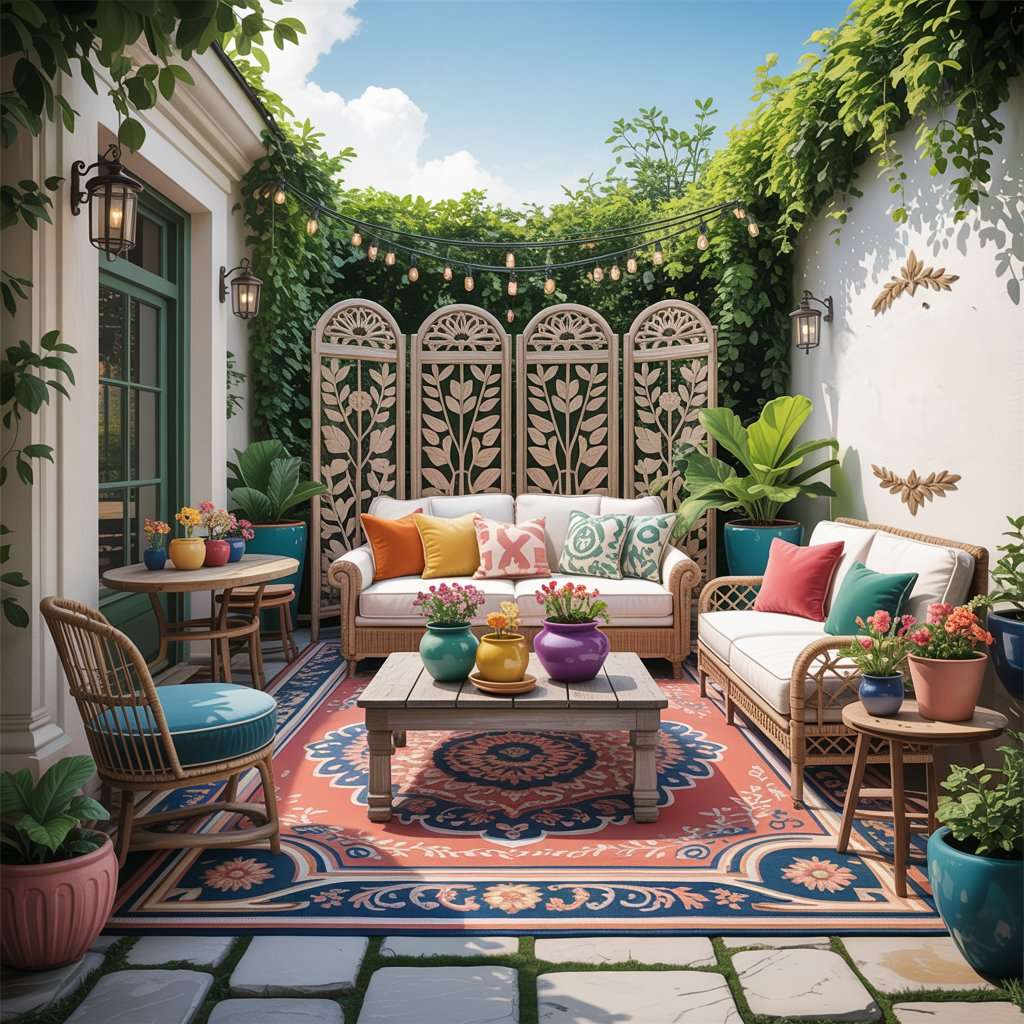
Pro Tip: Use weather-resistant fabrics in rich colors and patterns to add personality while ensuring longevity in outdoor conditions.
Incorporate Nature-Minded Decor Elements
Following the trend noted by Lindy Design Build, “nature-minded decorative Easter eggs” have become key components of sophisticated maximalist spaces. These include handcrafted ceramic vases, carved wooden sculptures, stone bookends, and other organic materials that bring the outside in.
Display collections of natural materials—driftwood arrangements, mineral specimens, or dried botanicals—in curated groupings that feel intentional rather than random. The contrast between natural textures and more refined decorative elements creates visual interest and grounding in maximalist spaces.
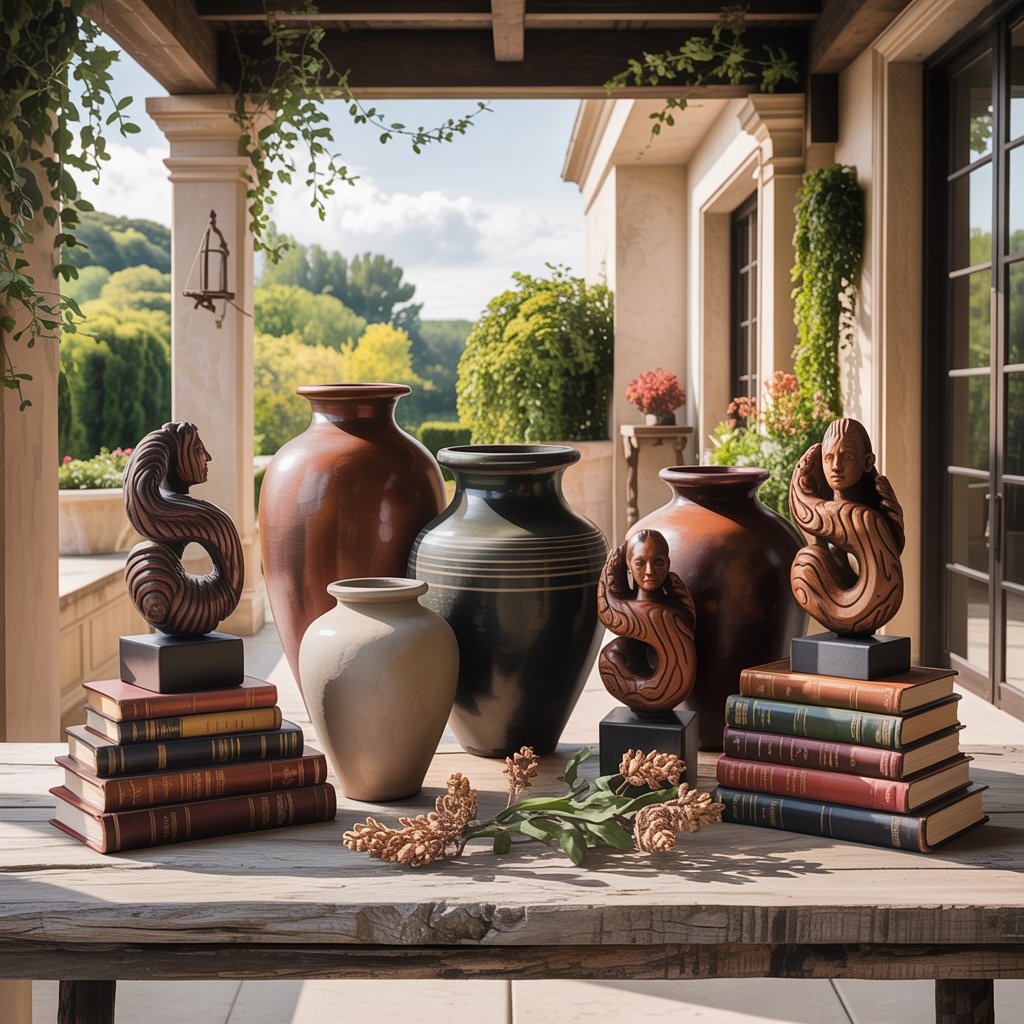
Pro Tip: Rotate natural elements seasonally to keep your space feeling fresh and connected to the changing year.
Perfect Your Maximalist Bedroom Sanctuary
Your bedroom should be a personal haven that reflects your unique aesthetic without compromising comfort. Layer bedding in varying textures (linen, cotton, velvet), add multiple decorative pillows in complementary patterns, and incorporate richly colored throws at the foot of the bed.
Create a dramatic focal wall behind your bed with wallpaper, bold paint, or an upholstered headboard in a luxurious fabric. Flank your bed with mismatched nightstands that each serve your specific needs—one for books, one for electronics, each topped with appropriate lighting that complements your overall aesthetic.
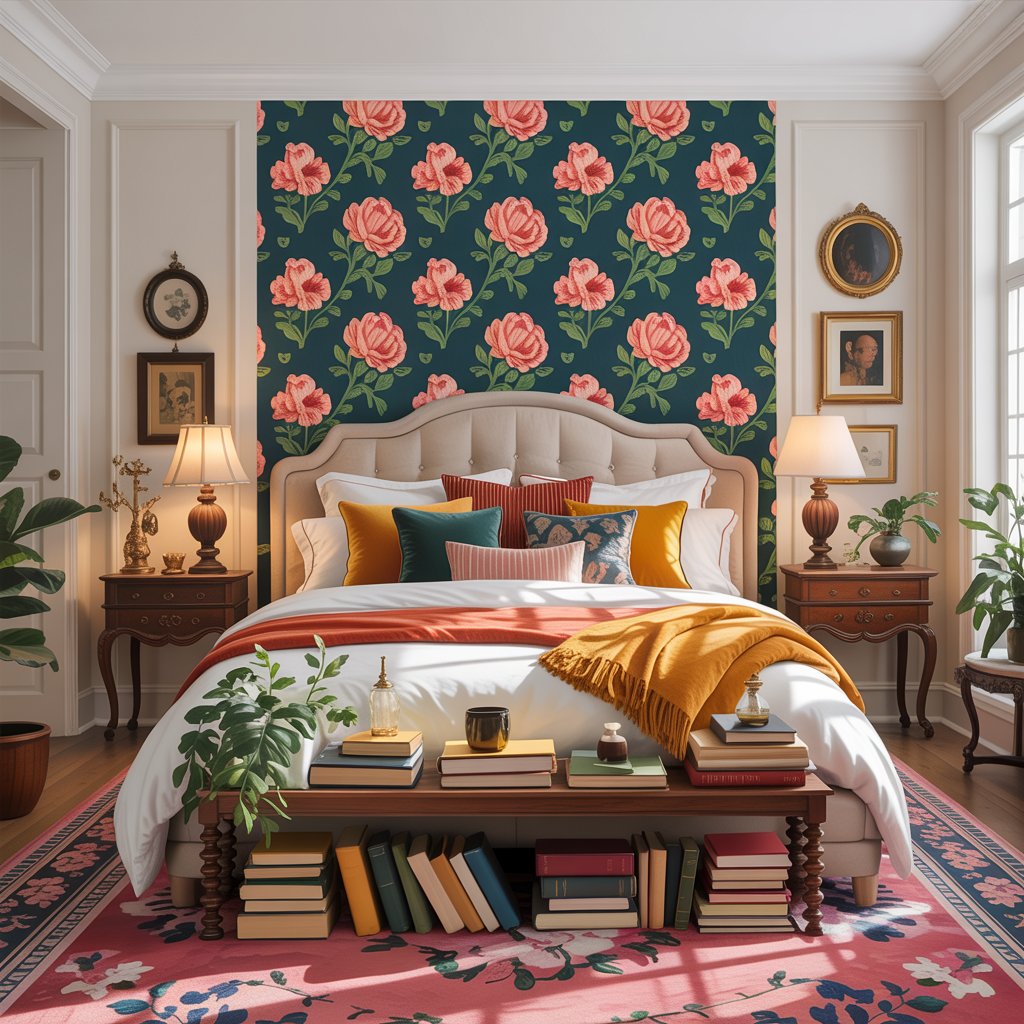
Pro Tip: Keep electronics and clutter hidden in your bedroom maximalism to maintain a restful atmosphere despite the visual richness.
The maximalist movement of 2025 isn’t just about decorating—it’s about self-expression through space. As we’ve explored through these fifteen approaches, true maximalism isn’t random accumulation but thoughtful curation that reflects your unique story. Remember Dorothy Draper and Mario Buatta, storied decorators who built their legacies by “embracing color and pattern in ways rarely seen before,” as Country Living reminds us. Your home should be a visual autobiography that evolves with you, welcoming guests into your world with every thoughtfully arranged element. Don’t be afraid to break rules, mix unexpected elements, and most importantly—fill your space with what genuinely brings you joy. After all, in the words of William Burges that still resonate powerfully today, “I think it better to have a room rich and full of beautiful things than a room bare and empty of any.”
